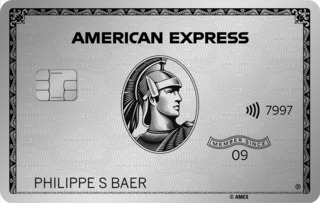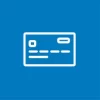Apple Pay was launched in Switzerland on July 7, 2016. Here, moneyland.ch answers the most important questions about using Apple Pay in Switzerland.
1. How do I use Apple Pay to pay?
You can settle payments at contactless POS terminals using Apple Pay by simply placing your eligible iPhone or Apple Watch in close proximity of the terminal. Apple Pay makes use of NFC technology – the same technology used in contactless credit cards and debit cards. You must confirm transactions by authenticating them via finger print scan (Touch ID). Alternatively, you can also authenticate transactions by entering a passcode. You do not need to open an app in order to make payments.
2. Which devices can run Apple Pay?
Apple Pay is compatible with all iPhone models launched from 2014 onwards. You can also use Apple Pay with all Apple Watch models from series one, and with all iPads which have Touch ID or Face ID. Apple Pay can also be used on Apple Macintosh computers which have Touch ID.
3. Can I make small payments with Apple Pay without authentication?
No. All payments made with Apple Pay must be authenticated by fingerprint scan – including small payments.
4. What are the requirements for using Apple Pay?
You can simply enter and store your card information in Apple Pay on your device. The only requirement is that your card issuer has an agreement with Apple that lets you use the Apple Pay service.
5. Which cards can I use to pay?
Apple Pay accepts Visa, Mastercard and American Express cards. However, you can only use a credit card or prepaid card if your card’s issuer has enabled the card for use with Apple Pay.
Initially, only Cornèrcard, Bonuscard, Swiss Bankers and Swisscard (from October 2016) partnered with Apple to enable some or all of their cards for use with Apple Pay.
Now, nearly all Swiss card issuers have partnerships with Apple. Apple Pay partners now include Cembra Money Bank, Viseca, UBS, Raiffeisen, Postfinance, and Migros Bank.
You can use a Debit Mastercard or Visa Debit card with Apple Pay, if your bank has a partnership with Apple. Of the major Swiss banks, UBS, Credit Suisse, the Zürcher Kantonalbank, Valiant Bank, Migros Bank, and Bank Cler let their customers use Apple Pay. Postfinance debit cards can also be used with Apple Pay.
You can quickly find all cards which can be used with Apple Pay by selecting the Apple Pay filter in the interactive credit card and prepaid card comparisons.
6. Where can I pay with Apple Pay?
Nearly all POS terminals in Switzerland are NFC capable, which means Apple Pay can be used to pay at most shops and other businesses.
You can also use Apple Pay at an increasing number of online stores using the Safari web browser.
7. Does using Apple Pay cost me money?
Apple does not charge any fees to you as a user when you use Apple Pay to make payments. However, the fees charged by the issuer of your credit card, prepaid card, or debit card apply just as they do when you pay directly with your card.
8. Do I pay foreign transaction fees?
Apple does not charge foreign transaction fees. However, you still pay the foreign transaction fee charged by the issuer of the card which you use to make international payments with Apple Pay. Important: Using Apple Pay in combination with a Swiss credit card to pay for purchases outside of Switzerland can be very expensive. All Swiss credit cards have foreign transaction fees. In addition to charging foreign transaction fees, card issuers also add markups to currency exchange rates, which adds another cost.
Debit cards can also have high fees. A foreign transaction fee of 1 franc or 1.50 francs per transaction is particularly relevant if you use your card to make small purchases.
But there are big differences in the foreign transaction fees charged by different card issuers. Neobanks generally have exceptionally low fees.
9. Can I earn reward points with Apple Pay?
Yes. If the credit card or prepaid card which you use with Apple Pay lets you earn reward points or airline miles, you will also earn these when you use your card to pay via Apple Pay. The amount of points you earn for different kinds of transactions depends on the terms and conditions of your reward credit card.
10. Can I earn cash back when using Apple Pay?
Yes. If you use a cash back credit card in combination with Apple Pay, you earn cash back just as you would when you use the card to pay directly. Cash back credit cards that can be used with Apple Pay include the Cashback credit cards from Swisscard, among others. Read the guide to Swiss cash back credit cards for more information.
11. How secure is Apple Pay?
Using Apple Pay to make contactless payments is relatively secure. A new security key is generated for each POS transaction. This key is sent to the card issuer. Additionally, all transactions must be authenticated by a fingerprint scan or by entering a code on your iPhone.
Like all payment methods, Apple Pay has its weak points. For example, it is theoretically possible for a fraudster to create an Apple Pay account using stolen credit card details and additional security information.
12. How strong is Apple Pay’s privacy policy?
Apple claims that it does not harvest data about transactions made with Apple Pay. However, you can easily track all recent purchases in the app, so transactions are recorded. Apple can also technically record the time and place at which each transaction is made.
13. What are the advantages of Apple Pay?
In terms of user-friendliness, Apple Pay has an edge on external Apple has built a strong reputation around its user experience and is able to offer a full ecosystem.
It could be argued that usability is better than that offered by cash and payment cards, as physical and online payments are seamlessly integrated. It could also be argued that many consumers are more likely to have their phones on them than their wallets.
14. What are the disadvantages of Apple Pay?
The primary disadvantage of Apple Pay is that it can only be used with Apple devices. Another disadvantage is that not all POS terminals are NFC enabled. This is especially true outside of Switzerland, as there are countries in which contactless cards are not currently popular. The fact that not all Swiss card issuers have partnered with Apple to enable Apple Pay limits its usability. It is also worth mentioning that Apple – unlike Samsung with Samsung Pay – charges fees to card issuers when cardholders use Apple Pay to pay for purchases, and this cost is ultimately passed on to consumers in some way.
Granting a US tech giant that is not subject to Swiss privacy laws unlimited access to one of the most intimate areas of your private life – how you spend your money – is not likely to appeal to privacy-minded individuals. Using cash or a payment solution which is governed by Swiss privacy laws provides much greater protection from data harvesters.
15. How is Apple Pay different from Twint?
Twint does not require you to store credit card information and can be used on many different devices from various manufacturers.
However, as a third-party app, Twint has a disadvantage against Apple Pay because it is not seamlessly integrated into devices. You have to open the app before you can use it.
16. How popular is Apple Pay in Switzerland?
The 2023 Swiss payments survey by moneyland.ch shows that use of Apple Pay remains marginal in Switzerland. Only 24 percent of residents consider Apple Pay to be indispensable, compared to 78 percent who consider credit cards indispensable, and 79 percent who consider cash to be indispensable. Only 13 percent of residents regularly use Apple Pay to pay for purchases in stores.
More on this topic:
Find and compare all Swiss credit cards which support Apple Pay
Credit card foreign transaction fees explained

 Deal of the Day
Deal of the Day 







